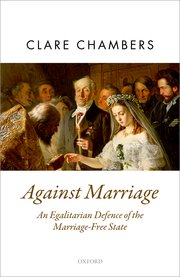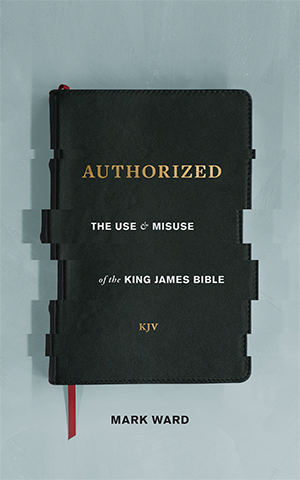Robert Cara highlights a difficulty that interpreters for 2 Thessalonians 2:3 face. That verse “has signs occurring before the Second Coming” whereas “1 Thess. 5:2 … apparently does not” (Robert J. Cara, A Study Commentary on 1 and 2 Thessalonians EP Study Commentary [Webster, NY: Evangelical Press, 2009], 199). Cara seeks to resolve this problem by arguing that “the appearing of the Antichrist and Christ’s battle with him will essentially take place at the same time” (Ibid., 206).
I don’t find this to be a satisfying resolution to the problem.
James Hamilton observes that the “rebellion” that Paul refers to in 2 Thessalonians 2:3 probably relates to “the following statements in Daniel, each of which uses the Hebrew noun פסע (peša’), rendered as ‘transgression’ (e.g., ESV, NKJV) or ‘rebellion’ (HCSB, TNIV [TNIV cited here]):
- Daniel 8:12, ‘Because of rebellion’
- Daniel 8:13, ‘the rebellion that causes desolation’
- Daniel 8:23, ‘when rebels have become completely wicked’ (participial form of the cognate verb)
- Daniel 9:24, ‘ to finish transgression’
These texts that refer to ‘rebellion/transgression’ and ‘rebels’ in Daniel are accompanied by the references to ‘the abomination that makes desolate’ (Dan. 11:31;12:11 and cf. the similar phrases in 8:13 and 9:27)” (James M. Hamilton, With the Clouds of Heaven: The Book of Daniel in Biblical Theology, New Studies in Biblical Theology, ed. D. A. Carson [Downers Grove: InterVarsity, 2014], 192).
Included in Daniel 8 is the specific period of time which either amounts to 2,300 days or 1,150 days (the difference being whether evening and morning are counted individually or together as the indication of a single day).
Also, on Cara’s view, why would Paul’s response simply have been, if the Day of the Lord had happened, you would know because Christ would be present. To explain why Paul did not simply argue in that way, Gene Green argues that 2:2 should be translated as it is by the KJV: “that the day of Christ is at hand,” Green agues: “The following discourse on the signs before the end (vv. 3ff.) itself indicates that the concern was not about whether the day had already come but its imminence” (Gene L. Green, The Letters to the Thessalonians, Pillar New Testament Commentary, ed. D. A. Carson [Grand Rapids: Eerdmans, 2002], 305).
But in taking this position Green is arguing against the undisputed “natural sense of ἐνέστηκεν“ (F. F. Bruce, 1 & 2 Thessalonians, Word Biblical Commentary, ed. David A. Hubbard and Glenn W. Barker [Waco, TX: Word, 1982], 165) in favor of one based on an inferred apodosis. Frame notes, “ἐνέστηκεν means not ‘is coming’ (ἔρχεται I 52), not ‘is at hand’ (ἤγγικεν Rom. 1312), not ‘is near’ (ἐγγύς ἐστιν Phil.45), but ‘has come,’ ‘is on hand,’ ‘is present’” (James Everett Frame, The Epistles of Paul to the Thessalonians, International Critical Commentary, eds. Samuel Rolles Driver, Alfred Plummer, and Charles Augustus Briggs [Edinburgh: T. & T. Clark, 1912], 248; see also Jeffrey A. D. Weima, 1-2 Thessalonians Baker Exegetical Commentary on the New Testament, ed. Robert W. Yarbrough and Robert H. Stein [Grand Rapids: Baker, 2014], 501-502). The NRSV correctly translates the phrase, “that the day of the Lord is already here” (cf. NIV, NKJV, NASB, ESV, [H]CSB).
The preceding discussion has revealed two problems: (1) Why did Paul not argue simply that they were not in the Day of the Lord because if they were in it Christ would have already come? (2) How is 1 Thessalonians 5, which indicates that there are no signs preceding the day of the Lord, to be harmonized with 2 Thessalonians 2, which seems to give two events that must precede the day of the Lord?
The solution to the first problem is noted by Weima: “Most commentators conclude that the Christians in Thessalonica likely did not understand the day of the Lord to be a single and instantaneous happening but rather to be a complex number of events, of which Christ’s parousia was just one part (so, e.g., Frame 1912: 248; Best 1977: 279; Marhsall 1983: 186; Morris 1991: 217; Wanamaker 1990: 240; Dunn 1998: 301n37; for objections, see Nicholl 2004:117). The claim that ‘the day of the Lord has come,’ therefore, would be interpreted by the Thessalonians to mean that the series of events connected with that eschatological day have begun to unfold and that ‘the coming [parousia] of our Lord Jesus Christ and our gathering to him’ (2 Thess. 2:1) are about to take place” (Weima, 502). This interpretation makes sense both of this passage and as well as with the numerous other passages about the Day of the Lord which, when put together, point to that Day including both the tribulation judgment at the end of the age and the following reign of Christ (in the millennium). The one modification I would make to Wiema’s statement is that the coming or parousia of Christ, is not simply a part of the complex events that make up the Day of the Lord but is itself a complex event.
The second problem, how to reconcile this passage with 1 Thessalonians 5, which says the Day of the Lord will come “as a thief in the night” while people are saying “There is peace and safety” (cf. Matt 24:36-44).
I think the key to this problem is the fact that the phrase in 2 Thessalonians 2:3 “that day will not come” is not present in the Greek text but is supplied by translators. Thomas argues that the supplied apodosis should be “that day is not present” rather than “that day will not come.” He reasons that the present tense in the context indicates that the supplied apodosis should be present tense also. (Robert L. Thomas, “The Place of Imminence in Recent Eschatological Systems,” in Looking into the Future, ETS Studies, ed. David W. Baker [Grand Rapids: Baker, 2001], 210-11).
Furthermore, πρῶτον need not indicate that the apostasy and man of lawlessness come before the Day of the Lord. Martin notes that “its placement in the sentence slightly favors the understanding that the apostasy comes ‘first’ and then the lawless one is revealed.” (D. Michael Martin, 1, 2 Thessalonians, New American Commentary, ed. E. Ray Clendenen [Nashville: Broadman and Holman, 1995], 232. On this reading, Paul is saying that the Thessalonians will know that the day of the Lord is present when they see, first, the apostasy and, second, the revelation of the man of lawlessness. Best also observes that the placement of πρῶτον could indicate that Paul is itemizing here rather than saying that the apostasy and man of lawlessness come before the Day of the Lord. However, he notes that word order is not determinative (281).
Despite these observations, neither Martin or Best adopt the above view. Martin makes the odd objection that if the above view were true, the restrainer of would have been mentioned in 2:3 as well as 2:7-8. It is by no means clear that this is the case. Best makes the more reasonable observation, also made by Weima (510), that Paul does not add the word “then” or “second” as might be expected in such a situation. This objection is not decisive. Ellicott (109) and Milligan (98) both note the καί can carry this role—and does so elsewhere in the Thessalonian correspondence.
In sum, I would argue that a defensible translation is: “Now concerning the coming of our Lord Jesus Christ and our being gathered together to him, we ask you, brothers, not to be quickly shaken in mind or alarmed, either by a spirit or a spoken word, or a letter seeming to be from us, to the effect that the day of the Lord is already present. Let no one deceive you in any way. For that day is not present, unless, first, there come a rebellion, and [second] the man of lawlessness is revealed, the son of destruction.”
In this view, the interpretational choices favor the interpretation that the day of the Lord is not present because if it were present, there would be a rebellion followed by the revelation of the man of sin, and those things have not yet happened.


